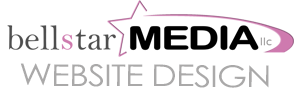What's In A Business Card?
- ED Cass
- Dec 10, 2015
- 4 min read

Every day we hand out a tiny brochure about our businesses without even realizing it. Business cards come in all shapes, sizes and colors, and its one of the first things handed out to everyone everywhere to distinguish who we are and what we do. We all understand that a business card is a necessity, yet we often fail to see it (or use it) as a marketing opportunity.
Your Business Card is the best low-cost and most used marketing tool. A necessity in business today, and if structured properly, it’s the best opportunity you have to market yourself or your business to a targeted and captive audience.
Functions of a Business Card
A business card has many functions. It brands, informs, advertises, directs, and promotes action. Your business card has a purpose – make sure you give it purpose. It can be the best low-cost marketing tool that generates a call to action which leads potential customers right to your business.
A professional business card is an important part of your marketing collateral that promotes your brand image, makes a statement and conveys a message. The importance of a professionally designed business card can either help or hinder how you do business. In many instances, it’s the customers first point of contact; the first impression… your business card will either invoke a positive or negative message or image of your. First impressions matter in business, and you want your business cards to be working for you, you want them to leave a lasting memory of a positive first impression. Remember: you only have one opportunity to make a first impression, make it a good one.
Importance of consistency in a company’s brand.
Your brand image is typically reflected in your business card. Your business card is a reflection of the brand image and integrity of your company. Poorly designed business cards have the potential of painting a negative impression of your business and tend to get lost in a sea of cards that we are bombarded with on a regular basis.
Spending a little money on a professionally designed business card can both save you a lot of money, and if structured properly, can leverage both operations and strategies you have in place to generate customers and sales.
It’s About What’s Right for Your Brand
With so many printing and design options available today, it’s a good idea to research and know what’s right for your brand before your create your business cards.
Keep in mind, cramming as much as you can onto a standard business card will not make it more efficient or functional… less is more would be a better cliché, although too little won’t fare well either. Too much print looks busy and terribly unprofessional: Simple is best. Sort out the information and keep only what's totally necessary for someone to know -- your name, your company, what you do, and why they should use you. At the very least a logo, name and contact method (address, phone number, email and web address) should go into a business card design.
Business Card Tips
There are a variety of options to include in your business card that will assist you in your marketing strategy – keep in mind, not all of them will apply to all businesses, the idea is to use the ones that fit into your marketing strategy and will promote the action you want the customer to take.
Avoid home-made cards, cheap print specials in price, quality and paperstock. A poor quality card implies a business with poor quality products and services. Instead of attracting business, poor quality/unprofessional cards would most likely repel rather than attract customers.
Print in 4-color. Stay away from clipart images. An image is worth a thousand words, choose wisely the image you want to convey.
Give your card purpose. When someone looks at your business card, they should be able to tell immediately what your business is or does.
Include your logo (your brand identifier). Your logo should have some connection to what your business does or what you are selling.
Include your website, social media accounts, business or promotion twitter, hours and your address, phone number and fax number.
Use the back of your business card to expand your marketing, advertising and calls to action through promotions, coupons, discounts, incentives, testimonials, or referral opportunities.
Where applicable, offer discounts, include coupons, serve as event tickets, note cards, or appointment cards.
Include your Unique Selling Proposition (USP) This is especially important when your product or service is similar to other businesses around you. Very few businesses are unique or one-of-a-kind. Your card should state at least one very powerful reason a customer should do business with you, or how you stand out from the competition. This usually becomes the element your marketing strategies are based around.
Get creative. A business card that stands out is sure to be remembered over the endless stacks of cards that are accumulated on a regular basis. This can be accomplished in various ways: rounded corners, vertical layout, multifunctional designs, stock variations, etc. Strive to leave an impression with a card that looks great, and clearly defines what your business does.
Cost-Effective Marketing and Advertising
Having a set of business cards produced is cheaper than other forms of advertising, and more portable than signs, posters or brochures. You can carry your business card with you everywhere you go. A business card can be posted on bulletin boards, local stores and various other locations. Creating a professional business card and using it as the marketing tool to brand, inform, advertise, direct, and promotes action leverages business operations, represent credibility, offers recognition and is the standard for numerous networking opportunities.


Comments